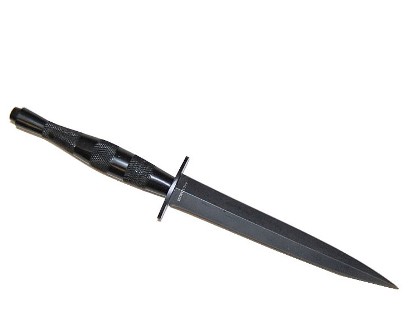Want to find out about the functional design of the Canadian military knives used in WW2? Read ahead to learn about the Canadian military knife from WW2 and its use in man to man combat…
One of the most famous military knives used by the Canadians during the World War II was the Fairbairn-Sykes Fighting Knife. This was the double-edged knife with a special grip developed by William Fairbairn. It was issued to the British commandos, Canadian soldiers and the SAS to protect them in hand-to-hand combat. The knife is often compared to a stiletto but the comparison is misleading because the stiletto was a stabbing knife.
The Canadian military knife is very popular with collectors mainly because of its association with the commando Regiment and in fact it was very popular with the British and a commemorative knife was created in solid Gold and placed in the memorial at Westminster Abbey.
Unique Design of the Military Knife used by Canadians in World War II
This Canadian military knife designed by Fairbairn Sykes was for use in surprise attacks and combat fighting. It has a slender blade which could pierce the rib cage, leaving a deadly blow. The handle allows for precise grip and combined with the double-edged blade makes the perfect combination to protect someone who is involved in one-on-one hand-to-hand combat. The two main features while designing this combat knife were keenness and balance.
Combat trainers would have you know that there is no more deadly weapon than the knife when you’re fighting at close range. The Canadian combat knife used in World War II was also designed to protect the owner. But it is supposed to be easy to handle and fits easily in the hand of the user, without being so heavy that it drags the knife. The blade was designed with sharp cutting edges and a good stabbing point which aims to make a clean cut in the artery causing the victim to bleed and die quickly.
The combat knife used during World War II by the Canadians was created in several patterns. It takes the original design of the Shanghai knife which is only 5.5 inches long at the blade. The first pattern knives have a 6.5 inch blade with a flattened ricasso which is missing from the original design and still unexplained by the manufacturer.
They also have a slightly longer blade which is less than 7 inches and finished with a 2 inch wide oval shaped cross guard. The patterned grip is knurled and the word England is stamped on the handle side of the cross piece.
The third pattern of this knife has a different handle which was designed to include a ring grip but this was not favored by the designer because it made the weapon harder to hold when it became wet. However, the manufacturer continued to make this knife because it is very easy to manufacture.
The reason the blades are so long is that during combat fighting with opponents bearing thick clothing, the long blade would ensure that it would penetrate the clothing and then the flesh delivering a fatal wound to the victim.
All of these designs have a distinctive foil like grip to provide the user with multiple handling options. Quite a few companies have copied these designs because they have become very popular and high utility during combat. The designer of the knife was a police chief in Shanghai before the country was captured by Japan and trained multiple numbers of soldiers in the use of his fighting knife.





